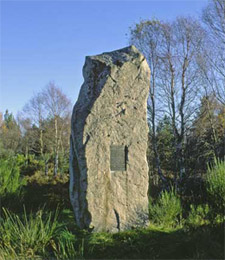WordPress database error: [Got error 28 from storage engine]
SELECT t.*, tt.*, tr.object_id FROM wp_terms AS t INNER JOIN wp_term_taxonomy AS tt ON tt.term_id = t.term_id INNER JOIN wp_term_relationships AS tr ON tr.term_taxonomy_id = tt.term_taxonomy_id WHERE tt.taxonomy IN ('category', 'post_tag', 'post_format') AND tr.object_id IN (19718) ORDER BY t.name ASC
Clan Craig History
Although the surname Craig can easily be identified with the Gaelic word for a cliff or outcrop of rock (such as Ailsa Craig or Craigellachie) its origin appears to go far back into the time of the Picts, a native race from North East Scotland, of which very little is known. The story goes that as the Scots began to expand into this area the Picts were allowed to remain there on condition that all future Kings agreed to marry Irish Princesses.
Very early records of this surname appear in Ayrshire and Lanarkshire around the 12th century and this surname appears on the Ragman Roll in 1296. Despite this the stronger lineage of the clan comes from Aberdeenshire, seated at Craigfintray Castle in Kildrumie and has been for a long time connected to the Gordon Clan.

Memorial to the Battle of Culblean. John Craig led 300 of his clansmen into the battle between forces loyal to David II and forces loyal to Edward Balliol. It was a decisive victory for those loyal to the King.
John Craig led his clan in the battle of Culbean on the 30th of November 1335.
Around 1440 another branch of the clan developed near Berwick where they were granted Estircrag.
Richarde de Crag was the vicar at St Mary’s in Dundee in the 1550s and John Craig was imprisoned during the Reformation for adopting Protestantism. Fortunately he escaped and joined up with John Knox.
Sir Thomas Craig of Riccarton was a well known authority on Scottish Feudal Law. He was much admired by James VI and his work ‘Jus Feudale’ is still referred to in Scottish Law. His son Sir James Craig became one of the Scottish undertakers of the Ulster Plantation (N. Ireland) in 1610. His descendant James Craig of County Down was the son of a whiskey millionaire. During the 1920 he was an organiser for the Ulster Volunteer Force (UVF) who opposed Home Rule. In 1921 he became the first Prime Minister of Northern Ireland. He later became Viscount Craigavon.
The winning design for Edinburgh’s New Town (the part of Edinburgh which extends to the north of Princes Street) was James Craig and his grand Georgian street layout is more or less intact to this day.
The more commonly used Craig tartan was designed by McGregor-Hastie around 1957 and the colours are representative of earthy tones meant to symbolise the Rocks from which the surname derives.
The Craig crest, of a chevalier on horseback with a broken lance represents the ‘broken men’ from other clans who were granted the protection of the clan.
Clan Craig Posts






